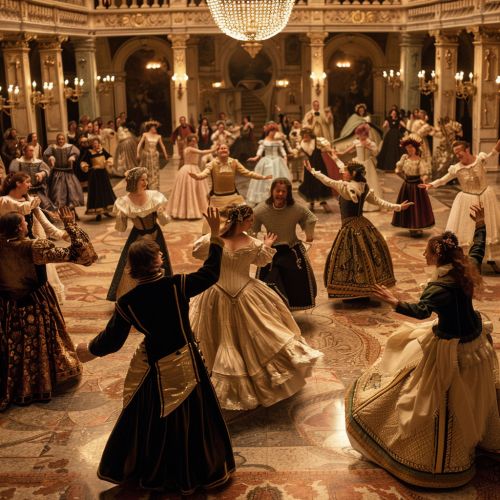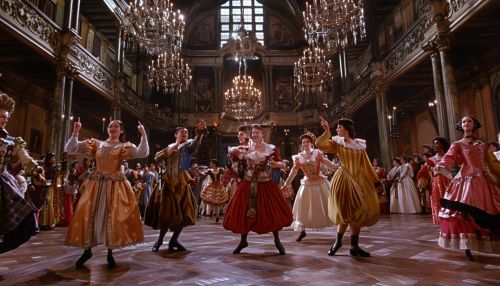Renaissance dance
Overview
The Renaissance was a time of great cultural and artistic change in Europe that spanned from the 14th to the 17th century. One of the most vibrant and dynamic aspects of this period was the development of Renaissance dance. This form of dance, which was an integral part of the social fabric and courtly life, evolved from the medieval dance forms and laid the groundwork for the dance forms of the later Baroque and Classical eras.


Historical Context
Renaissance dance was deeply intertwined with the music, social customs, and politics of the time. The dances were often performed in the courts of the nobility and were seen as a reflection of a person's social status and refinement. The ability to dance well was considered an essential skill for anyone wishing to participate in society, and dance masters were often employed to teach the intricate steps and patterns of the various dances.
Types of Renaissance Dance
There were two main types of Renaissance dance: court dance and country dance.
Court Dance
Court dance was a formal type of dance performed in the courts of the nobility. These dances were characterized by their elegance and complexity, with intricate footwork and patterns that required a high level of skill and precision. Some of the most popular court dances of the Renaissance period included the Pavane, the Galliard, and the Allemande.
Country Dance
In contrast to the formal court dances, country dance was a more informal type of dance that was popular among the lower classes. These dances were often performed in large groups and involved a series of simple steps and patterns that could be easily learned and executed. The most well-known country dance of the Renaissance period is the Branle.
Dance Techniques and Styles
The techniques and styles of Renaissance dance were as varied as the dances themselves. However, there were some common elements that were present in most dances of this period.
Steps and Patterns
The basic steps of Renaissance dance were relatively simple, consisting of steps, leaps, and hops. However, these basic steps were often combined in complex patterns and sequences that required a high level of skill and precision to execute.
Body Posture and Movement
The body posture and movement in Renaissance dance were characterized by a sense of grace and elegance. Dancers were expected to maintain a straight and upright posture, with the body slightly inclined forward. The movements were smooth and flowing, with a focus on the elegance of the footwork and the precision of the patterns.
Musical Accompaniment
Renaissance dance was always performed to music, with the rhythm of the music dictating the steps and patterns of the dance. The music was often played by a small ensemble of musicians, using instruments such as the lute, the violin, and the recorder.
Influence on Later Dance Forms
Renaissance dance had a significant influence on the development of later dance forms. The court dances of the Renaissance period laid the groundwork for the development of the formal dance forms of the Baroque and Classical periods, such as the Minuet and the Gavotte. The country dances, with their emphasis on group participation and simple, repetitive patterns, can be seen as the precursors to the folk dances of later periods.
